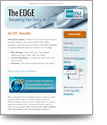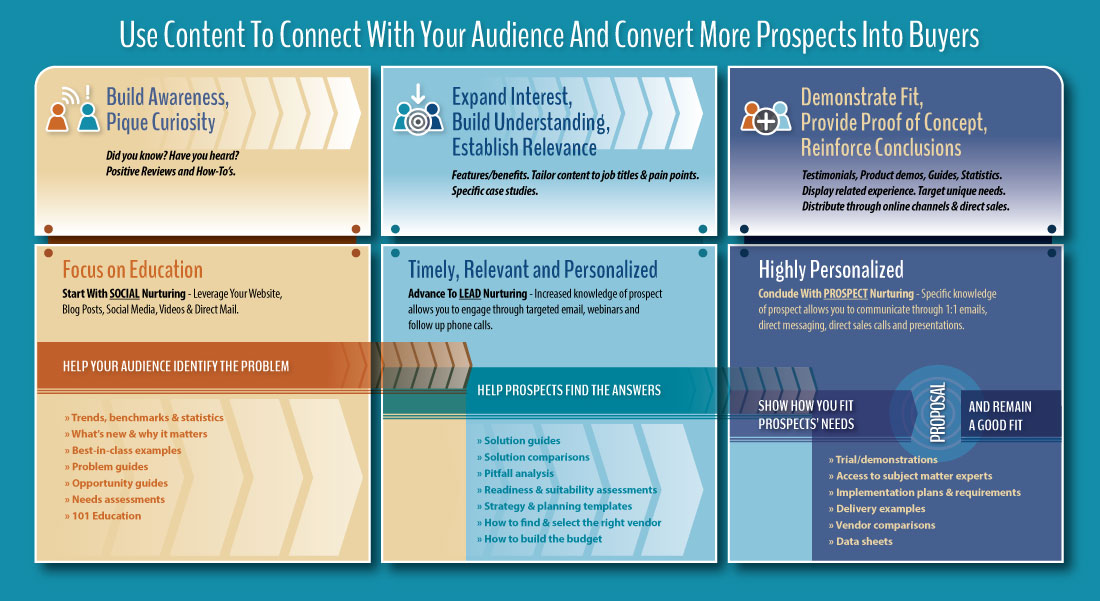It's human nature to skip steps. Get an A without studying. Retire without saving. Excel without practicing. It rarely works.
It doesn’t work for your website development either. Generic navigation headings. Dull content. A shiny new design with no substance. A website with no traffic.
Too often, steps are skipped. Maybe you bought the generic template. Maybe you lack know how or your scarce resources are pulled in multiple directions. Maybe you aren’t getting what you paid for. However it happens, the results don’t justify the investment.
It doesn’t have to be that way. If your website development goals include attracting a broader audience, generating more leads and increasing revenue, then make sure you take these steps.
Prioritize Website Development First
Does social media intrigue you? Are competitors executing PPC campaigns? Do you wonder if the ads that follow you around from site to site could help your business?
Start and commit to effective website development, first.
Successfully executing your site will provide the backbone for development of other areas, if and when they make sense.
Commit to Continuous Improvement
The competition, changes in customer needs, technological advancements and numerous other attributes mean that what works well today often doesn’t work well tomorrow. It’s only through a commitment to on-going improvements that your website will connect with your audience, helping you achieve your goals. On-going updates and improvements including page optimization, content, analytics reviews and competitor analysis are a requirement. You should demand this from whoever you have chosen to lead your web development.
Start with Top Level Navigation and Work Down
Creating great content and optimizing pages are crucial. But evaluate your navigation before you do anything else. Here is an excellent post on the importance of navigation for both the user experience and search results.
Remember that more is less. A crowed top level navigation bar confuses users. If you have more than seven categories, find a way to whittle it down. Is there a method to the order of your navigation headings? Your audience will look to the top left first and then to the far right. Determine your most important categories then order them appropriately.
Make the Research Investment
Using generic navigation headings like “products” or “capabilities” is easy. Site visitors can figure out what each heading means. That is, if they ever get to your site. Your audience doesn’t search for the words “products” or “capabilities.” They search for the specific things you do. Determining the best words and phrases requires research. That research benefits top level navigation selection, optimal product category names and words to use in content.
Brainstorm the words and phrases that you believe connect with your customers. Review the competition and learn what they use. Determine the search volume for the words you identify. Utilize tools like the Google Keyword Planner, Wordtracker or SEO Book. Query your employees, especially on the customer facing side, to get their opinions.
Develop Alternatives
Turn the information you collected into multiple alternatives. The most common navigation structures are object based, audience based or action based. Developing navigation that fits each option will help you evaluate and construct a better outcome.
Don’t Research in a Vacuum
Engage your customers and prospects to get their feedback. Take your well thought out draft and ask customers for feedback. The valuable information will improve the outcome.
There’s Still More Work to Do
Building out content. Writing a blog. Developing social media channels and leveraging other inbound marketing tactics will all contribute to achieving your goals. Determine which tactics you have the time and resources to execute, then start down that path.
You may have been led to believe that developing an online presence is quick and easy. In reality, it takes many steps to ensure a successful outcome. For best results, take them one step at a time.




 Insight Delivered Directly to You Interesting topics, great offers and free marketing tools.
Insight Delivered Directly to You Interesting topics, great offers and free marketing tools.

